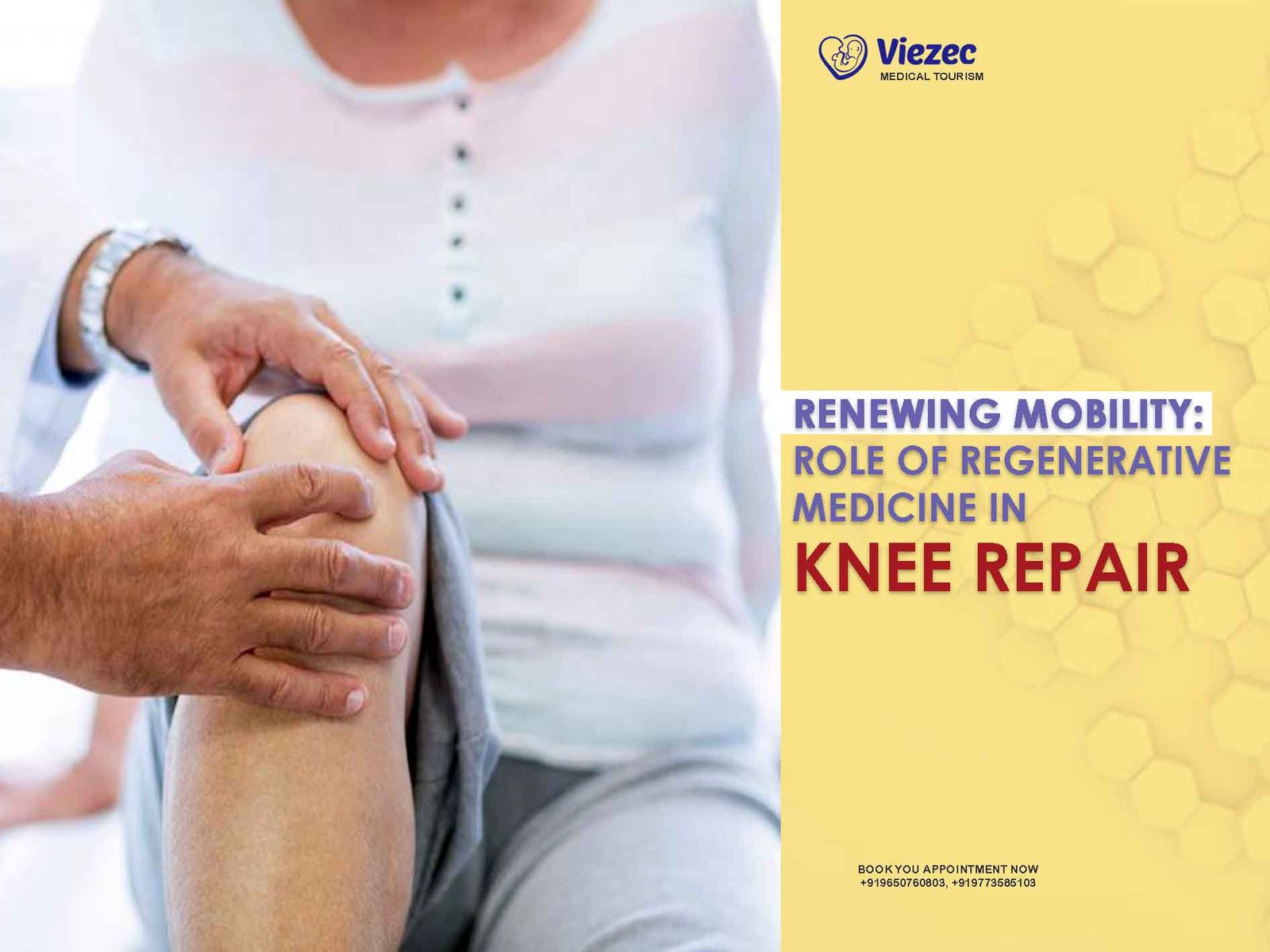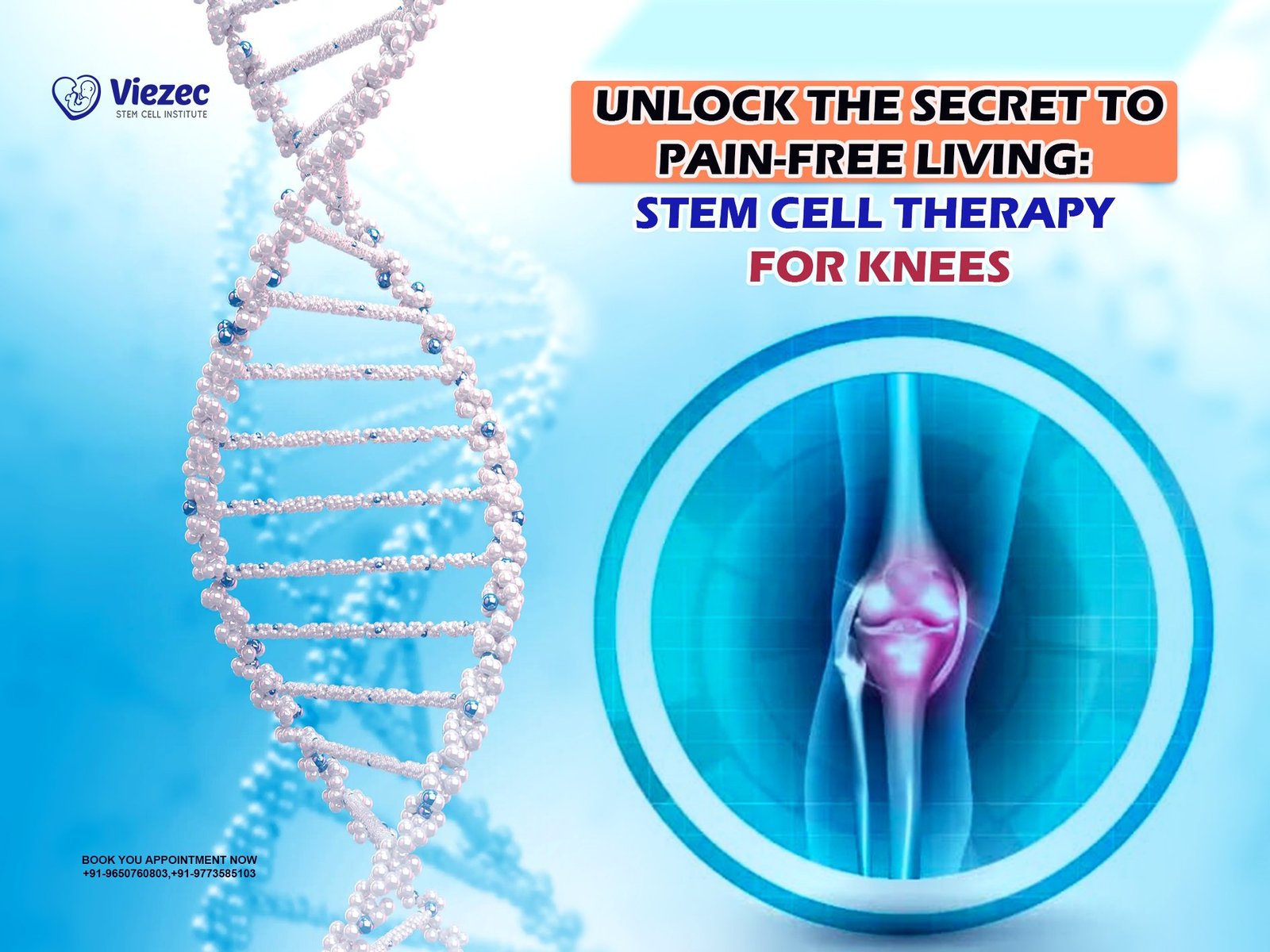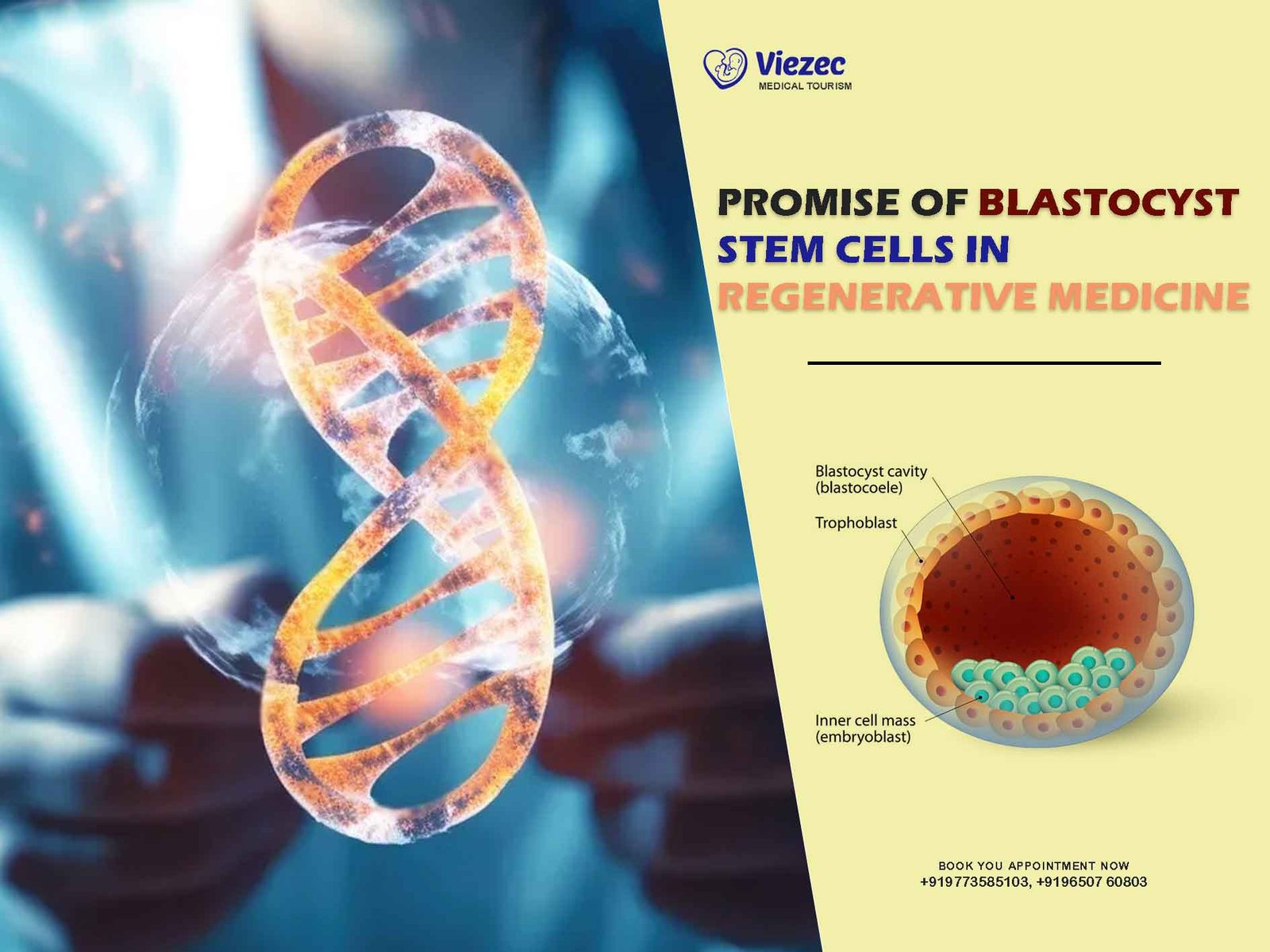In recent years, regenerative medicine has emerged as a promising field for treating various medical conditions, including knee injuries and degenerative diseases. With an aging population and increasing instances of sports-related injuries, the demand for effective and long-lasting treatments for knee repair is on the rise. Traditional treatments often offer temporary relief or require invasive procedures like knee replacement surgery. However, regenerative medicine presents a revolutionary approach that aims to restore damaged tissues and promote healing without the need for extensive surgeries or prolonged recovery periods. In this article, we delve into the role of regenerative medicine in renewing mobility for individuals suffering from knee injuries and degenerative conditions.
Understanding Knee Anatomy and Function
Before delving into the role of regenerative medicine, it’s crucial to understand the anatomy and function of the knee joint. The knee is one of the largest and most complex joints in the human body, comprising bones, ligaments, cartilage, and tendons. The main bones involved in the knee joint are the femur (thigh bone), tibia (shin bone), and patella (knee cap). Ligaments such as the anterior cruciate ligament (ACL), posterior cruciate ligament (PCL), medial collateral ligament (MCL), and lateral collateral ligament (LCL) provide stability to the knee.
Additionally, the knee joint is cushioned by two types of cartilage: articular cartilage and meniscus. Articular cartilage covers the ends of the femur, tibia, and patella, allowing smooth movement within the joint. The meniscus, on the other hand, acts as a shock absorber between the femur and tibia, reducing friction and distributing weight evenly.
The knee functions as a hinge joint, facilitating movements such as walking, running, jumping, and bending. However, due to its constant use and vulnerability to injury, the knee is prone to wear and tear, leading to conditions like osteoarthritis, ligament tears, and cartilage damage.
Challenges in Knee Repair
Traditional treatments for knee injuries and degenerative conditions often come with limitations and challenges. While non-invasive methods such as rest, physical therapy, and medication can provide temporary relief, they may not address the underlying cause of the problem. Invasive procedures like knee replacement surgery are effective but involve significant risks, long recovery periods, and potential complications.
Moreover, conventional treatments may not always yield satisfactory outcomes, especially in younger individuals or athletes who wish to maintain an active lifestyle. The degradation of cartilage and the limited regenerative capacity of certain tissues pose additional obstacles to effective knee repair.
Promise of Regenerative Medicine
Regenerative medicine offers a promising alternative to traditional treatments by harnessing the body’s natural healing mechanisms to repair and regenerate damaged tissues. Unlike symptomatic relief or invasive surgeries, regenerative therapies aim to restore the structure and function of the knee joint, providing long-lasting relief and improved mobility.
Stem Cell Therapy
One of the most widely studied approaches in regenerative medicine is stem cell therapy. Stem cells are undifferentiated cells with the unique ability to develop into various cell types, including bone, cartilage, and ligament cells. By harnessing the regenerative potential of stem cells, researchers aim to repair damaged knee tissues and promote tissue regeneration.
In stem cell therapy for knee repair, mesenchymal stem cells (MSCs) are commonly used due to their capacity to differentiate into cartilage cells (chondrocytes) and secrete growth factors that aid in tissue repair. These cells can be harvested from various sources, including bone marrow, adipose tissue, and umbilical cord blood.
Once harvested, MSCs are injected directly into the damaged area of the knee joint, where they can differentiate into the specific cell types needed for tissue repair. Additionally, MSCs secrete anti-inflammatory cytokines and growth factors, creating a favorable environment for tissue regeneration and reducing inflammation.
Platelet-Rich Plasma (PRP) Therapy
Platelet-rich plasma (PRP) therapy is another regenerative approach gaining traction in the field of knee repair. PRP is derived from the patient’s own blood and contains a concentrated dose of platelets, growth factors, and cytokines. These bioactive components play a crucial role in tissue repair and regeneration.
During PRP therapy, blood is drawn from the patient and centrifuged to separate the platelets from other blood components. The resulting PRP solution is then injected into the damaged area of the knee joint, where it stimulates the body’s natural healing response.
PRP therapy has shown promising results in promoting tissue regeneration, reducing pain, and improving function in patients with knee osteoarthritis, ligament injuries, and meniscal tears. Additionally, PRP injections are minimally invasive and carry minimal risk of adverse reactions since they utilize the patient’s own blood.
Growth Factor Therapy
Growth factors play a crucial role in regulating cell proliferation, differentiation, and tissue repair. In regenerative medicine, growth factor therapy involves the administration of exogenous growth factors to stimulate tissue regeneration and accelerate healing.
One of the key growth factors used in knee repair is transforming growth factor-beta (TGF-β), which promotes the proliferation and differentiation of chondrocytes, leading to the formation of new cartilage tissue. Other growth factors such as insulin-like growth factor (IGF), fibroblast growth factor (FGF), and platelet-derived growth factor (PDGF) also contribute to tissue repair and regeneration in the knee joint.
Growth factor therapy can be administered through various methods, including direct injection into the damaged tissue or incorporation into scaffolds or matrices for controlled release. By harnessing the regenerative potential of growth factors, researchers aim to enhance the effectiveness of knee repair treatments and improve patient outcomes.
Clinical Applications and Efficacy
The efficacy of regenerative medicine approaches for knee repair has been demonstrated in numerous preclinical and clinical studies. Stem cell therapy, PRP therapy, and growth factor therapy have shown promising results in promoting tissue regeneration, reducing pain, and improving function in patients with knee injuries and degenerative conditions.
Stem Cell Therapy
Clinical trials evaluating the efficacy of stem cell therapy for knee repair have reported encouraging outcomes. A meta-analysis published in the American Journal of Sports Medicine found that MSC-based therapies significantly improved knee function and reduced pain in patients with osteoarthritis compared to control groups. Furthermore, MRI studies have shown evidence of cartilage regeneration following MSC injection, indicating the potential of stem cell therapy to repair damaged knee tissues.
Platelet-Rich Plasma (PRP) Therapy
Several clinical studies have investigated the effectiveness of PRP therapy for knee osteoarthritis, ligament injuries, and meniscal tears. A systematic review and meta-analysis published in Arthroscopy: The Journal of Arthroscopic & Related Surgery found that PRP injections significantly improved pain and function in patients with knee osteoarthritis compared to controls. Similarly, PRP therapy has shown promising results in promoting healing and reducing pain in patients with anterior cruciate ligament (ACL) tears and meniscal injuries.
Growth Factor Therapy
While the clinical evidence for growth factor therapy in knee repair is still emerging, preclinical studies have demonstrated its potential efficacy in promoting tissue regeneration. A study published in the Journal of Orthopaedic Research investigated the effects of TGF-β therapy on cartilage repair in a rabbit model of osteochondral defects. The researchers found that TGF-β treatment significantly enhanced cartilage regeneration and improved joint function compared to untreated controls.
Standardization of Protocols
One of the challenges in regenerative medicine is the lack of standardized protocols for cell isolation, preparation, and delivery. Variability in cell sources, processing techniques, and injection methods can influence treatment outcomes and complicate the comparison of results across studies. Standardizing protocols and establishing guidelines for regenerative therapies will be essential for ensuring reproducibility and reliability in clinical practice.
Long-Term Safety and Efficacy
While short-term studies have demonstrated the safety and efficacy of regenerative medicine approaches for knee repair, long-term follow-up data are limited. Further research is needed to assess the durability of treatment effects, potential adverse events, and the need for repeat interventions over time. Longitudinal studies with extended follow-up periods will provide valuable insights into the long-term outcomes of regenerative therapies and their impact on patient mobility and quality of life.
Patient Selection and Personalized Medicine
Identifying the most suitable candidates for regenerative medicine interventions is crucial for maximizing treatment benefits and minimizing risks. Patient-specific factors such as age, severity of knee injury, comorbidities, and lifestyle factors may influence treatment outcomes and response to therapy. Implementing personalized medicine approaches that take into account individual patient characteristics and preferences will enhance the effectiveness of regenerative treatments and optimize patient satisfaction.
Cost-Effectiveness and Accessibility
The cost-effectiveness and accessibility of regenerative medicine therapies remain significant barriers to widespread adoption in clinical practice. Currently, these treatments may be prohibitively expensive for many patients and may not be covered by insurance plans. Addressing cost barriers, improving reimbursement policies, and expanding access to regenerative therapies will be essential for ensuring equitable distribution and maximizing the societal impact of these innovative treatments.
Make an informed Decision
Regenerative medicine holds immense promise for renewing mobility and improving the quality of life for individuals suffering from knee injuries and degenerative conditions. Stem cell therapy, PRP therapy, and growth factor therapy offer minimally invasive approaches to knee repair that harness the body’s natural healing mechanisms and promote tissue regeneration. While challenges remain in standardizing protocols, ensuring long-term safety and efficacy, and enhancing accessibility, ongoing research and technological advancements continue to drive innovation in the field of regenerative knee repair. By addressing these challenges and expanding access to regenerative therapies, we can empower patients to regain mobility, reduce pain, and live active, fulfilling lives free from the limitations of knee injuries and osteoarthritis.









